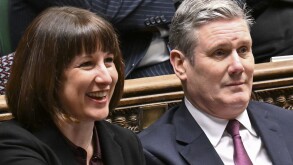TP adjustments are normally made when companies do not hit budget and a true-up to achieve targets is needed. COVID-19 has been an incredible disrupter to doing business and even those companies that normally hit targets are likely to need true-ups. This issue is therefore of particular relevance in a post-COVID-19 business environment.
As a reference, it is important to first define what is meant by a TP adjustment and to also describe a common commercial scenario where TP adjustments frequently occur.
Why are customs authorities interested in TP adjustments?
Related parties who trade with each other are required to declare a value for customs duties in respect of goods that move across borders. This value will be used to assess ad valorem duties. The primary method of valuing goods is the transaction value, being the price paid or payable for the goods between parties. This is commonly the invoice price of goods, subject to required additions and deductions to arrive at a customs value. The fact that a buyer and seller are related should not be grounds for regarding the transaction value as unacceptable. However, acceptance is conditional that the relationship did not influence the price.
In a common scenario, goods will be sold to a company that will act as the importer and distributor in an importing market. The distributor will have prescribed roles, risks and responsibilities and will have a target range of profitability. This is often expressed as a net margin percentage, determined as arm's length by reference to the profit margins of unrelated parties that trade under comparable circumstances. The cross-border sales price will be calculated by reference to achieving a target net margin and the arm's-length profitability of the distributor.
The challenge arises when the target profitability is not met, and the distributing entity has a profitability that is outside the arm's-length range. Companies will seek to adjust the distributor's profitability, bringing the net margin back into the arm's-length range. They will do this by making a TP adjustment, with this commonly happening as an end-of-year adjustment to the distributor's purchase price of the goods. Any such true-up is thus a post-importation adjustment to the previously declared customs value of imported goods. How then do you address this TP adjustment with customs?
First, reference should be made to case studies 14.1 and 14.2 that have been issued by the World Customs Organisation (WCO) Technical Committee on Customs Valuation (TCCV). These case studies address the use of TP documentation when examining related-party transactions. Case study 14.2 is particularly relevant because it includes a fact pattern where the importing distributor's profitability is not within the arm's-length range and, with no "compensating adjustments", the previously declared customs value was not acceptable and alternative methods of valuation were to be used, i.e. the use of transaction value is to be rejected.
In other words, if a TP adjustment should have been made and it was not, then the earlier declared prices are not viewed as meeting the arm's-length condition. Case study 14.2 is based on a resale minus transfer pricing methodology and references gross margin as the profit indicator, but the concept of making a TP adjustment to achieve a target margin and an arm's-length transaction is very clear.
Differential treatment
In discussions with some customs authorities in Asia, they are very much aware of TCCV case studies 14.1 and 14.2 and have clearly interpreted them as requiring companies to declare TP adjustments. Indeed, this is nothing surprising to many customs authorities and just confirmation of previously held positions. However, what is also the case is that most customs authorities have yet to support the requirement to declare TP adjustments with administrative procedures and a proper mechanism to facilitate such a declaration.
A notable exception is New Zealand Customs, which implemented a provisional values scheme (PVS) to assist importers in making post-import adjustments. Under the scheme, importers were required to register with New Zealand Customs. In doing so, they avoid financial penalties on customs value adjustments. Despite the availability of the scheme and the perception that it is being considered a success, only 100+ companies have registered under the scheme. Even without a statistical reference, this is considerably below the number of companies who actually make TP adjustments in New Zealand.
In other countries, for example Indonesia, there are provisions to allow for post-importation adjustments to the declared customs value to reflect royalty payments, but there is no provision to allow for TP adjustments. In practice, it is difficult for a company to proactively approach the Indonesian customs authority to declare a TP adjustment and, if audited, a company that makes adjustments without declaring them to customs authorities may be subject to assessments and penalties.
Avoiding penalties and obtaining refunds
Without a discrete mechanism in place to declare TP adjustments, in many countries the position is that companies need to use voluntary declaration programmes (VDPs), the same programmes that companies generally use to declare errors and issues of non-compliance. VDPs do not always allow for the complete removal of penalties, for example in Singapore where the authorities always reserve the right to assess penalties. In practice, Singapore Customs are very supportive of businesses and penalties, if any, are often minimal for TP adjustments. However, the fact that there is still the potential for penalties, even if very limited, is an inhibitor to some companies declaring TP adjustments to customs.
VDPs are also not always available. Thailand has a one-stop-shop VDP that keeps being extended, up to September 30 2021 for the last extension, but could conceivably not be available thereafter. An alternative in Thailand is to approach customs authorities proactively at each port of import, obtaining awareness and agreement for a retrospective TP adjustment mechanism to avoid penalties. Companies could potentially obtain a refund if the previously declared price is reduced, but such an approach is fragmented and time consuming, with more uncertainty than assurance.
However, it is best not to recognise a refund before it is in your bank account because the general perception of TP adjustments with customs is that additional duties will need to be paid, with refunds rarely available. Indeed, there are obligations to declare duty underpayments that result from TP adjustments but, for example in the Philippines, there is no obligation to declare a TP adjustment that results in a refund position. Filing for a refund is at the importer's discretion and not an obligation.
Being proactive
General advice to companies across the Asia-Pacific region is to be proactive in engaging with their customs authorities around TP adjustments, making sure to deal with the experienced, technically aware, customs officials who specialise in valuation matters in order to obtain an acknowledgement and agreement that a TP adjustment will be taking place.
Proactive engagement with customs should also address the administrative mechanism by which a TP adjustment can be declared, for example, via a single 'lump-sum' declaration or line-by-line adjustments for each prior import. There are also mechanisms in place in certain countries to obtain rulings around arm's-length pricing for customs, such as the advanced customs valuation arrangement (ACVA) process in South Korea.
Coordination of customs valuation and TP
In a webcast survey that was conducted by EY during the COVID-19 pandemic, companies were asked several questions related to the interaction of customs valuation and TP in their organisation. First, less than 20% of participants indicated a good or very good knowledge of the interaction between customs valuation and TP. The majority (80%) had limited knowledge or no knowledge of the interaction.
Less than 10% of companies indicated that they address customs valuation and TP in a coordinated manner, with more than 44% responding that they handle the issues completely separately. Approximately 17% indicated that they only link the issues together at times of addressing matters such as customs audits.
The answer which is of most significance was that more than 50% of participants indicated they only process TP adjustments to address corporate tax compliance. They would not additionally process TP adjustments to address compliance requirements that arise with customs and other indirect taxes, such as goods and services tax (GST).
In this period of COVID-19 business disruption, nearly 50% of the respondents indicated that they will be making TP adjustments this year.
A reluctance to engage
These survey results only confirm what had been anecdotally observed, i.e. that many companies often decide not to declare TP adjustments to customs. Anchored in the fact that the majority of companies do not have a coordinated approach to addressing customs valuation and TP, there is also the issue of inconsistent approaches to TP adjustments from customs across the Asia-Pacific region. In short, companies are not properly prepared to have the necessary dialogue with customs around the issue of TP adjustments, and are concerned that significant penalties could result.
However, not declaring TP adjustments to customs is becoming a higher risk strategy. From several recent discussions with various customs authorities, they are increasingly taking a negative view of companies that are tax-aware and sophisticated enough to be processing TP adjustments, often to reduce their corporate tax liability, yet at the same time are electing not to declare TP adjustments to customs where the customs duty costs would increase. In such circumstances, expect penalties and allegations of evasion to increase.
Are comprehensive declarations an obligation?
Optionality itself may also start to be a thing of the past. A recent development with the Taiwan tax authorities is that TP adjustments need to be processed as a 'package'. This requirement is from 2020 onwards and precise details are still being released. However, what has been indicated is that companies who wish to process one-time TP adjustments will need to have all the supporting agreements and documentation in place, and must make a payment, or claim a refund, in respect of all the various direct and indirect taxes as a consequence of the TP adjustment.
Requirement to act
In conclusion, although it is not possible to adopt a single line of approach in addressing TP adjustments with customs in Asia-Pacific, there is an increasing awareness among customs authorities that this is just a normal business activity and companies should indeed be declaring TP adjustments to customs. Also, customs are very much on the lookout for TP adjustments as part of their customs audits and will impose penalties for under declarations, this being particularly the case in this period of COVID-19 business disruption.
With the environment changing, companies need to be proactive in managing TP adjustments. Specifically, it needs to be recognised that, in many countries, there is a compliance obligation to also declare TP adjustments to customs.
Click here to read the entire 2020 EY-ITR Asia Pacific Guide
Adrian Ball Partner T: +65 6309 8787 Adrian Ball is a partner in the global trade practice in Singapore. With a focus on international trade and indirect taxes, he advises companies in addressing market access for their products. He supports clients in the handling of audits and investigations throughout Asia and has represented clients in the settlement of such matters with trade authorities, also supporting clients on litigation matters. He was previously based in Hong Kong SAR, Indonesia and the UK. His areas of particular experience include addressing strategic and operational issues facing companies as they operate their business and move goods throughout Asia. This includes advising on the tax and trade aspects of manufacturing and supply chain operations, addressing cross-border valuation of goods, and the use of free trade agreements. |












